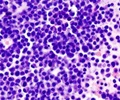Researchers have discovered the distress signal that induces the mobilization of specific repair cells from the bone marrow to the affected heart after an attack
At the McEwen Centre for Regenerative Medicine, Toronto General Hospital, researchers have discovered the distress signal that induces the mobilization of specific repair cells from the bone marrow to the affected heart after an attack.
While it has long been known that bone marrow cells have the ability to clear the dead tissue after a heart attack, what has not been known until now is the critically important role of bone marrow adult stem cells in repairing a damaged heart, restoring its function and enhancing the growth of new blood vessels."These cells act like generals in a battlefield, explained Dr. Shafie Fazel, cardiac surgery resident at TGH, University of Toronto surgeon/scientist program fellow and lead author of the study entitled, "Cardioprotective c-kit+ cells are from the bone marrow and regulate the myocardial balance of angiogenic cytokines," published today in The Journal of Clinical Investigation. "When damaged heart tissue sends out an 'SOS' distress signal, this subset of bone marrow cells mobilizes quickly and stimulates the growth of new blood vessels in the heart. This is the first step in repairing the heart and in preventing the vicious downward spiral of heart failure in which the heart progressively thins and dilates, eventually causing death." Despite advances in surgical procedures, mechanical assistance devices, drug therapy, and organ transplantation, more than half of patients with congestive heart failure die within five years of initial diagnosis.
"Cardiovascular diseases are the most important cause of mortality in Canada and the western world," said Dr. Ren-Ke Li, scientist at the McEwen Centre for Regenerative Medicine and Professor of Cardiovascular Surgery at the University of Toronto. "Each year, 70,000 Canadians suffer from a heart attack and many of them are left with crushing disabilities, mainly because the heart muscle is not able to regenerate after a heart attack. This study identifies the method the body employs to repair the heart and provides new therapies to stimulate cardiac regeneration and prevent heart failure in patients who have suffered a heart attack," noted Dr. Li, who is also a Canada Research Chair in Cardiac Regeneration. The research was performed in Dr. Li's laboratory
Dr. Li's team used genetically engineered mice in which bone marrow cells were modified to carry a green fluorescent marker allowing researchers to easily track them. The researchers demonstrated that these bone marrow cells are quickly mobilized to the damaged heart region following a heart attack. Once in the damaged area, the cells produce chemicals that trigger the growth of new blood vessels--an important step in repairing the injured heart.
The research also demonstrated that a specific molecule, called c-kit, which is located on the surface of a subset of bone marrow cells, plays a central role in this mobilization. The molecule c-kit is the 'switch' that needs to be turned on by the 'SOS signals' sent by the damaged heart. By binding to another molecule called the stem cell factor – much like a lock and key -- the "turned on" c-kit activates the bone marrow cells to migrate to the heart to help stimulate new blood vessel growth.
In the study, mice with defective c-kit bone marrow cells, could not mobilize these cells to race towards the injured site and regenerate the injured heart. Their heart function was dramatically impaired and, 42 days after a heart attack, their hearts dilated to twice the size of the normal mouse heart. However, the heart function of the c-kit defective mice could be restored to normal by restoring the c-kit cells in their bone marrow, confirming the importance of these cells in repairing the heart. This suggests that a similar treatment of an infusion of bone marrow cells after a heart attack may prevent progression of heart failure in patients who survived a heart attack.
Advertisement
"These findings have very important implications," noted Dr. Richard Weisel, Director of the Toronto General Research Institute, Professor and Chairman of Cardiac Surgery at the University of Toronto and co-author in this study. "Based on the knowledge we gained from this study, we can now design new strategies to enhance normal repair and regeneration for patients who suffered a heart attack." This concept is central to the exciting new field called regenerative medicine, which aims to restore, repair and regenerate damaged organs rather than merely treating the symptoms of disease.
Advertisement
Source:Eurekalert











